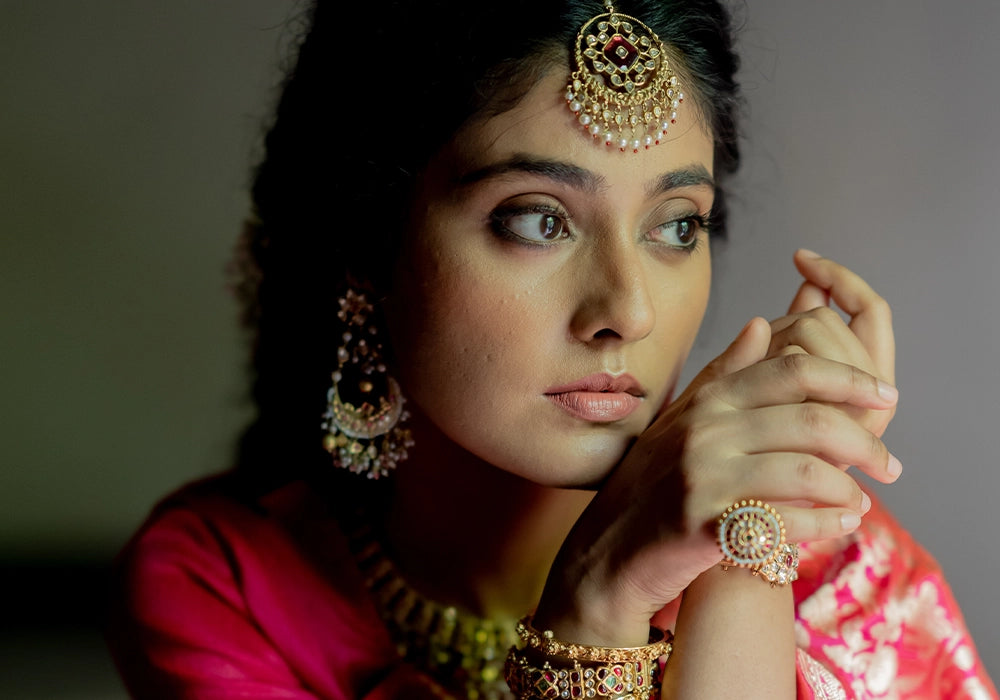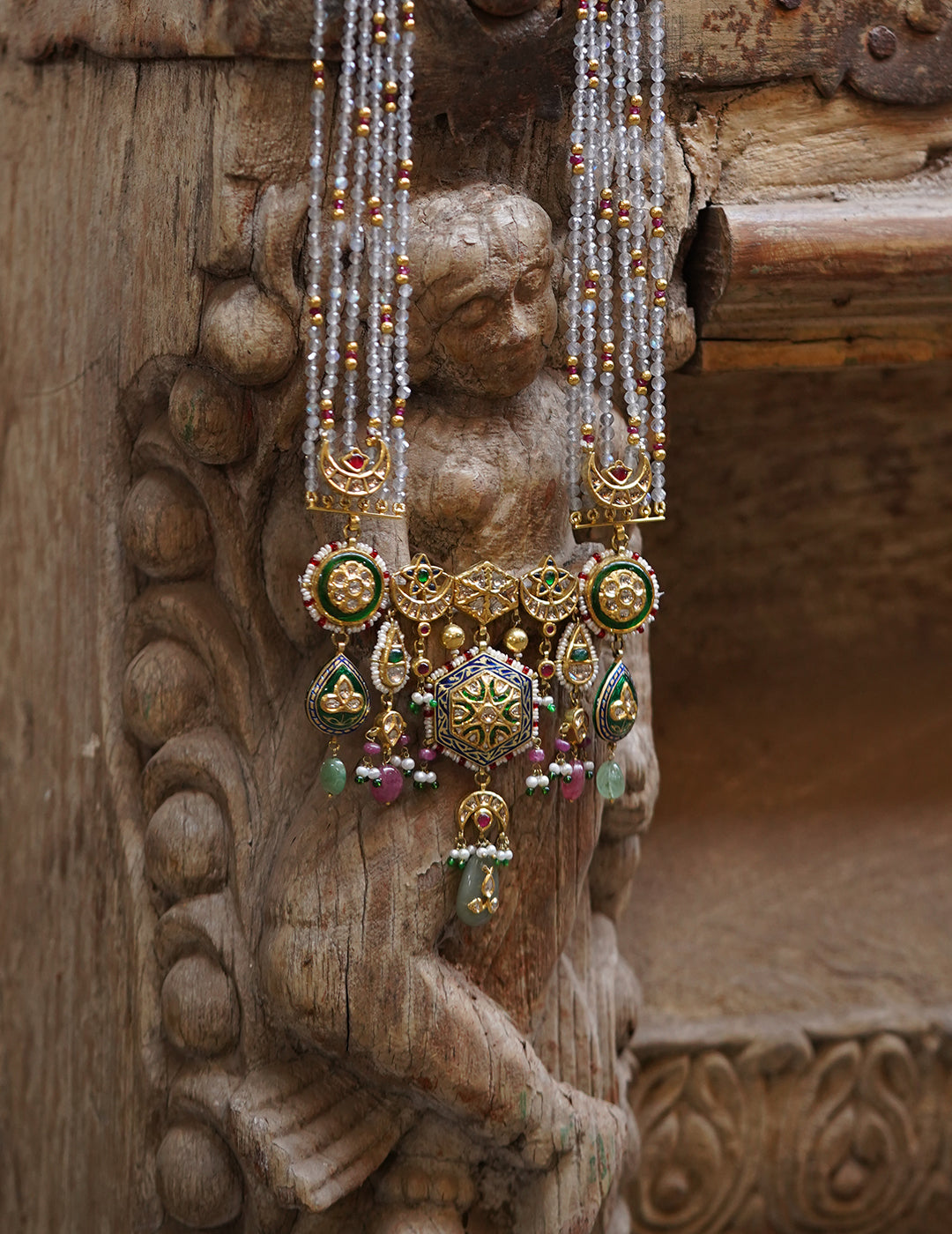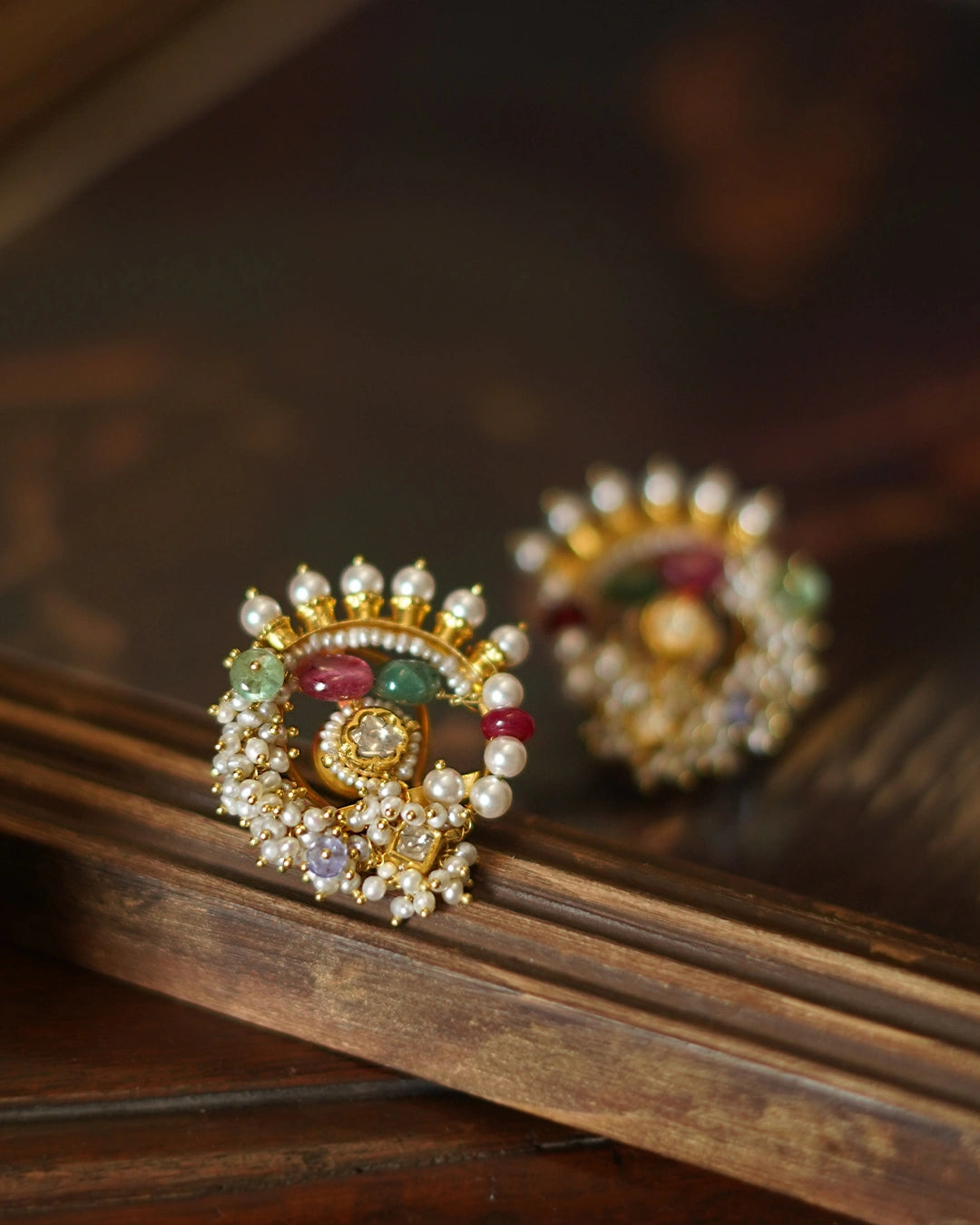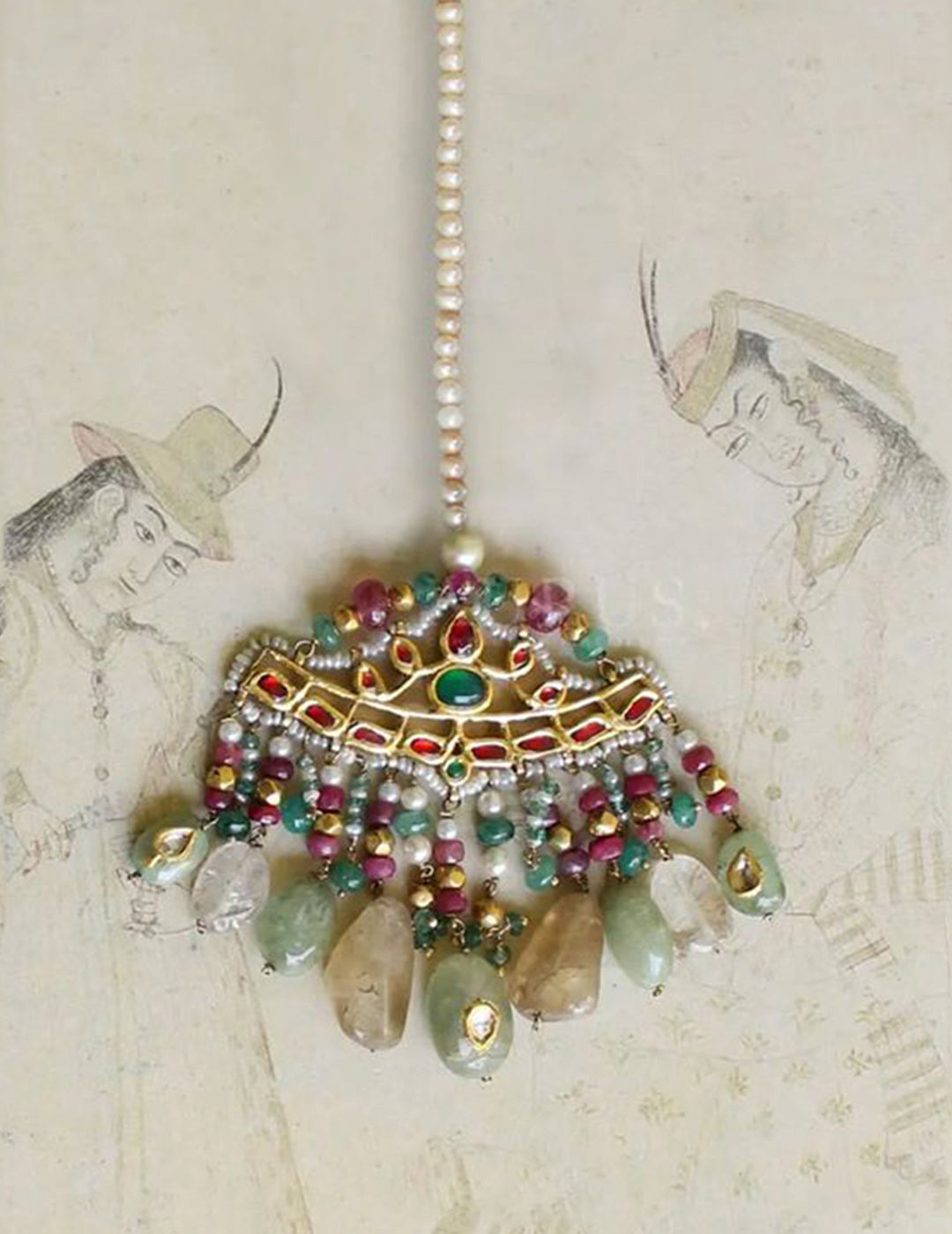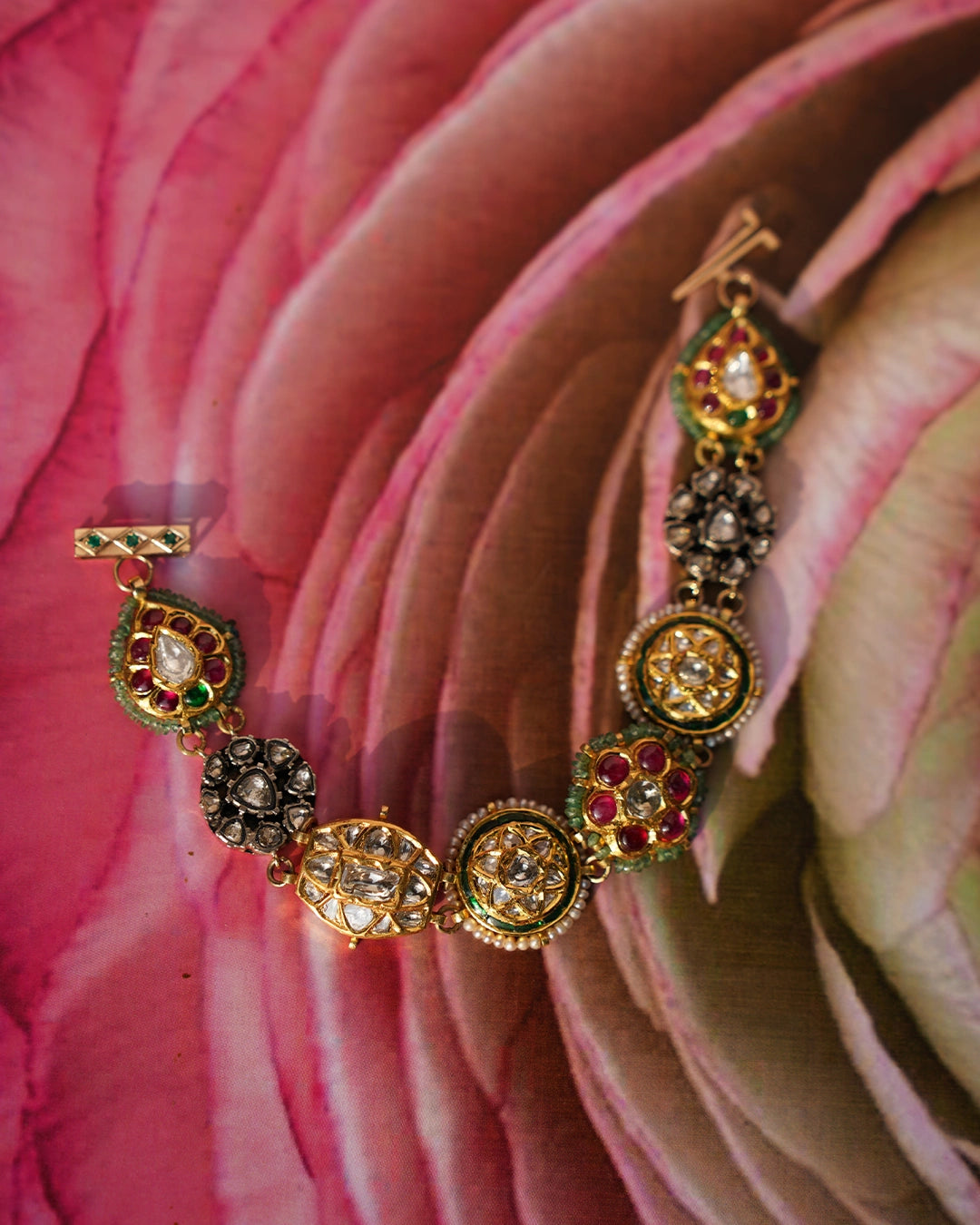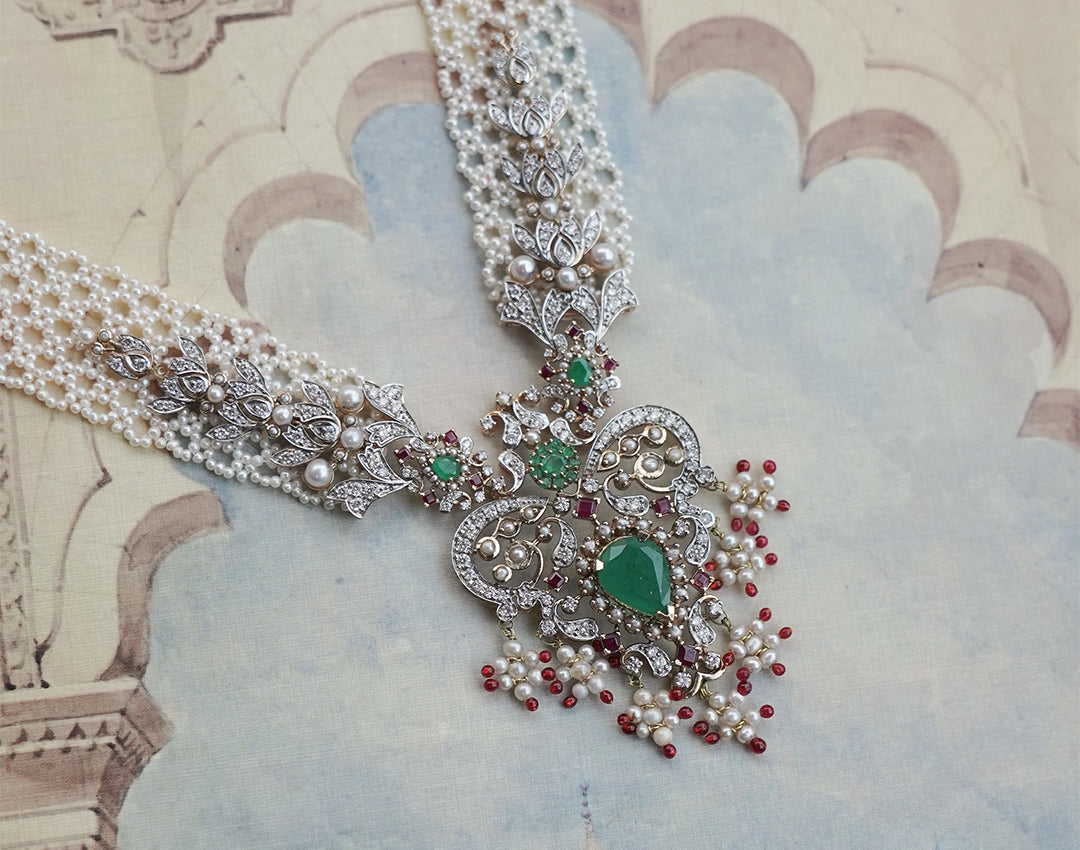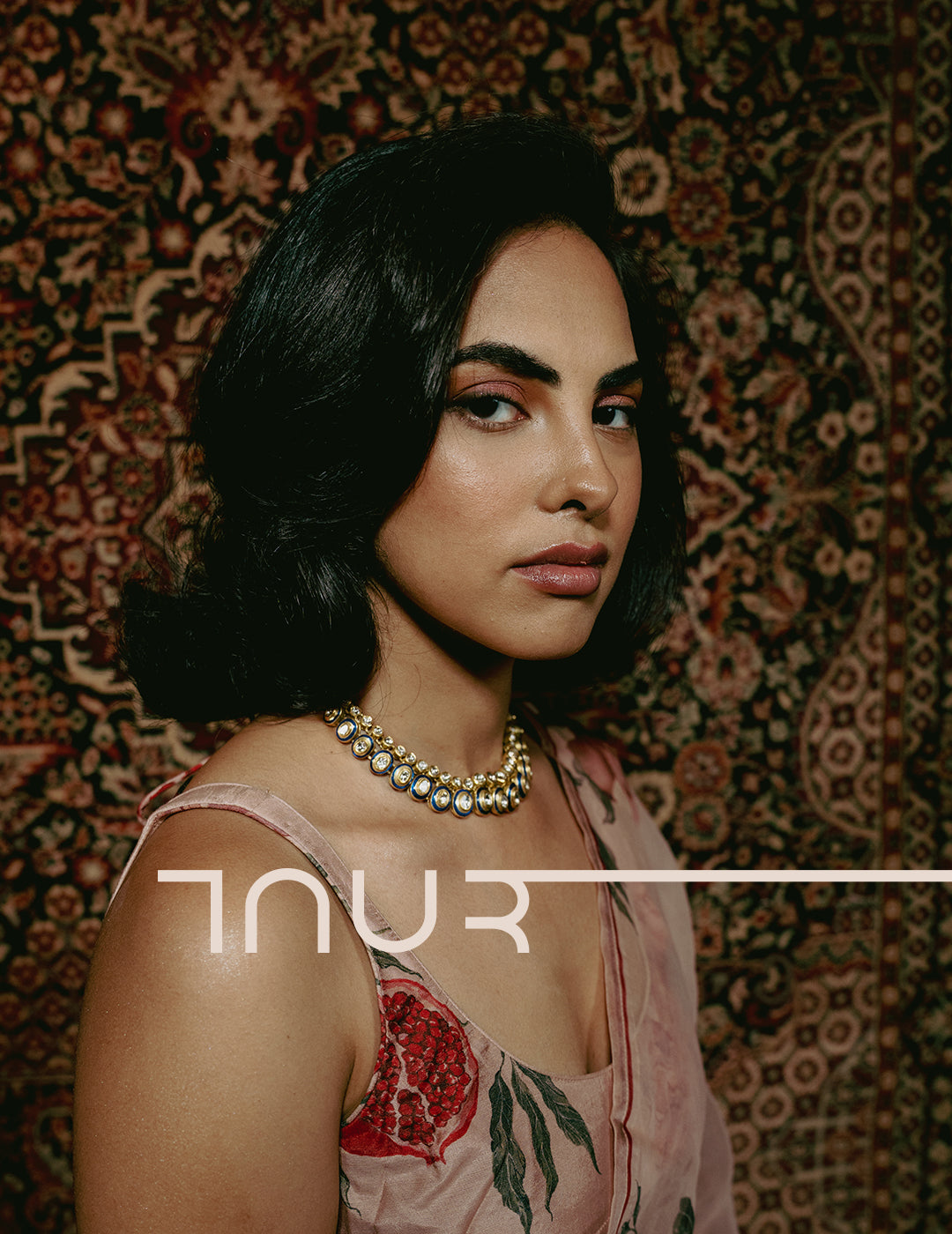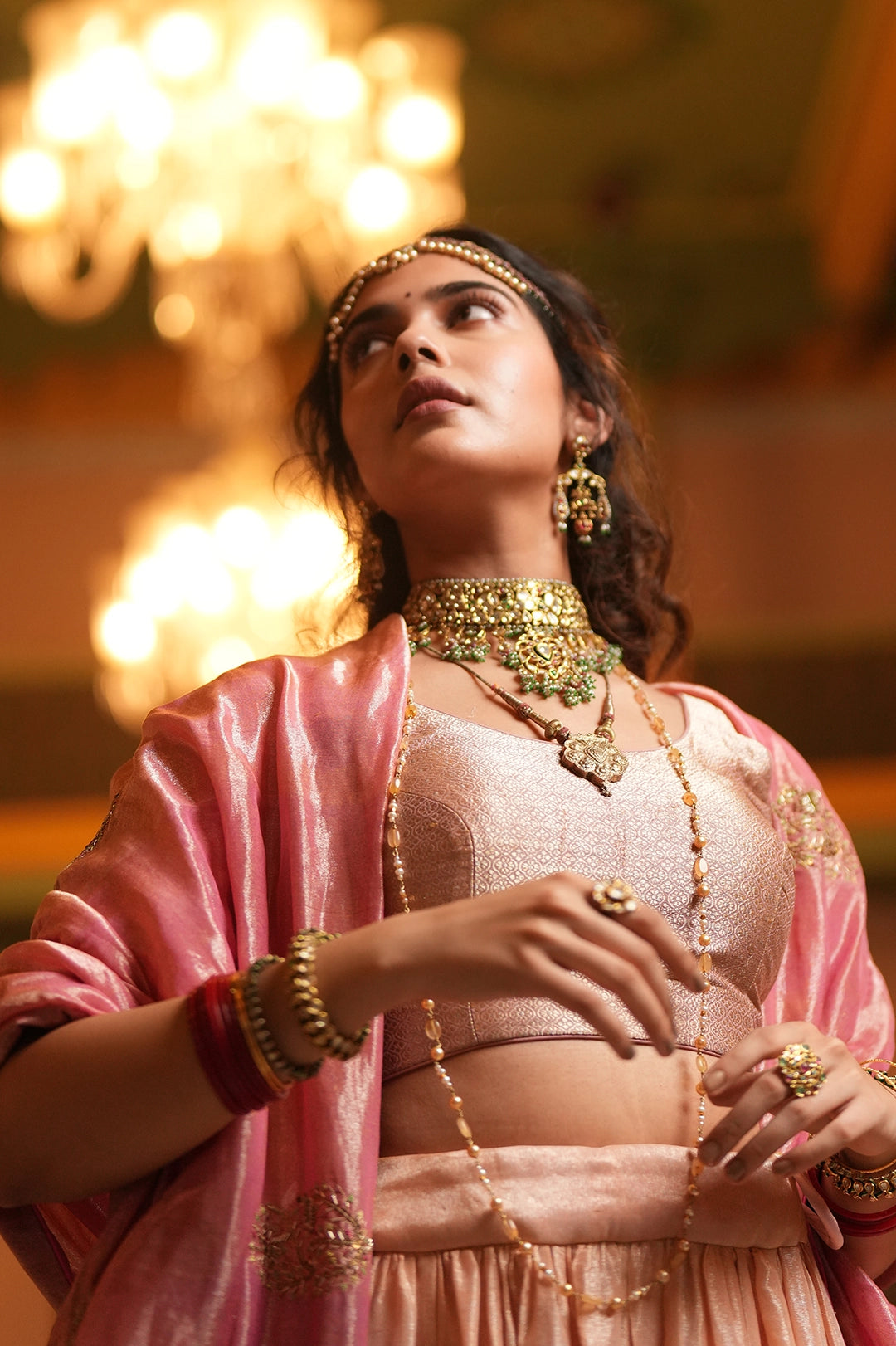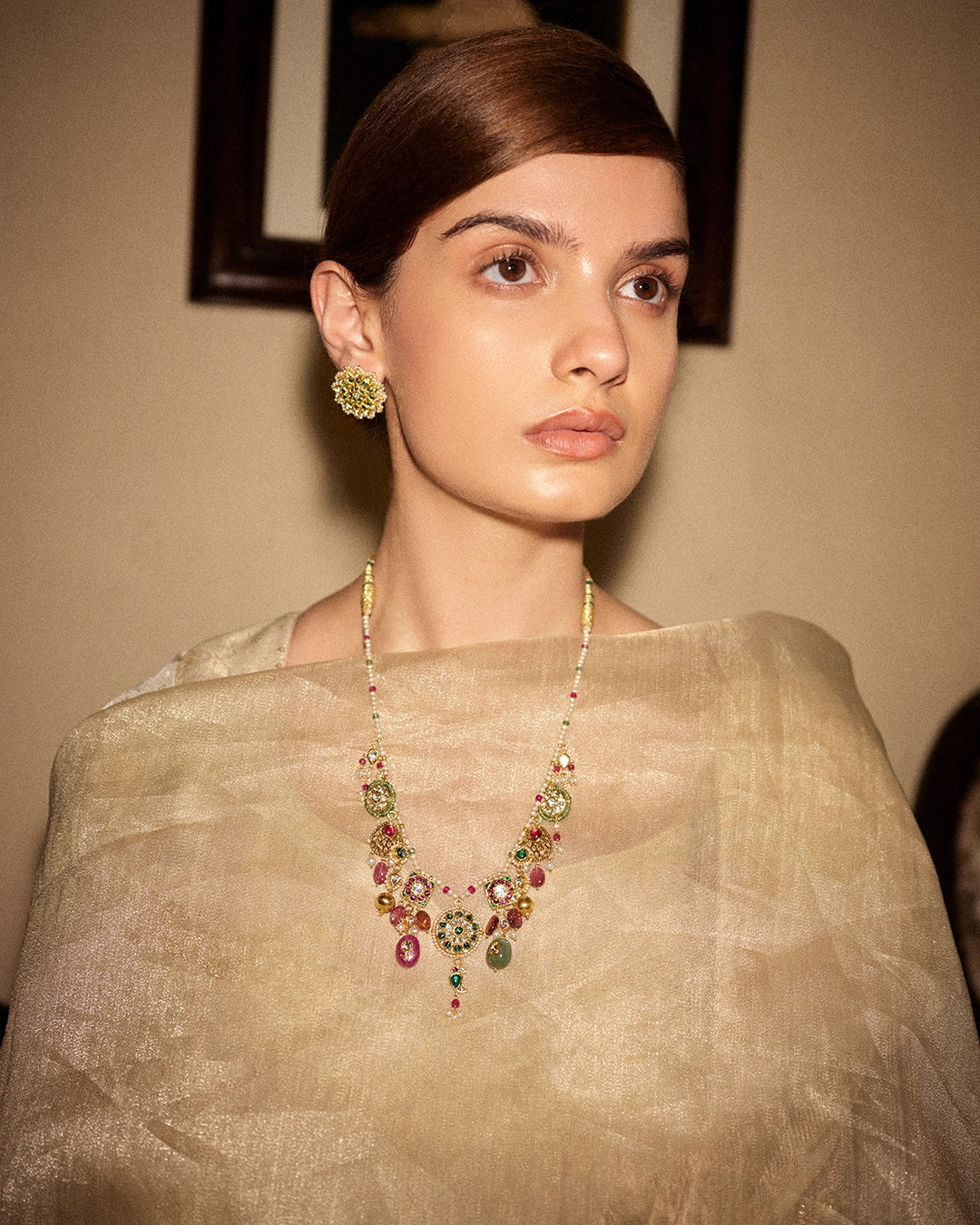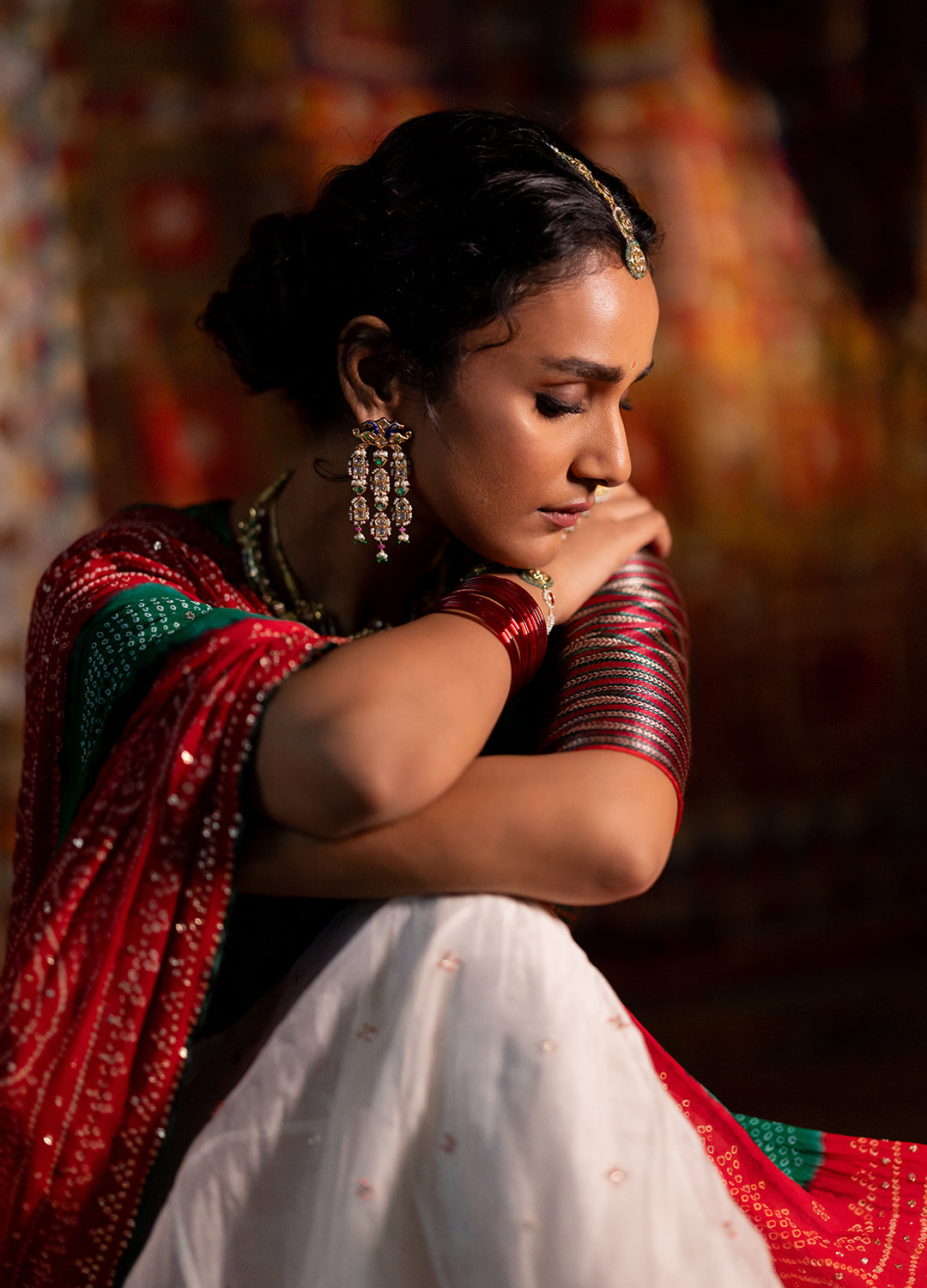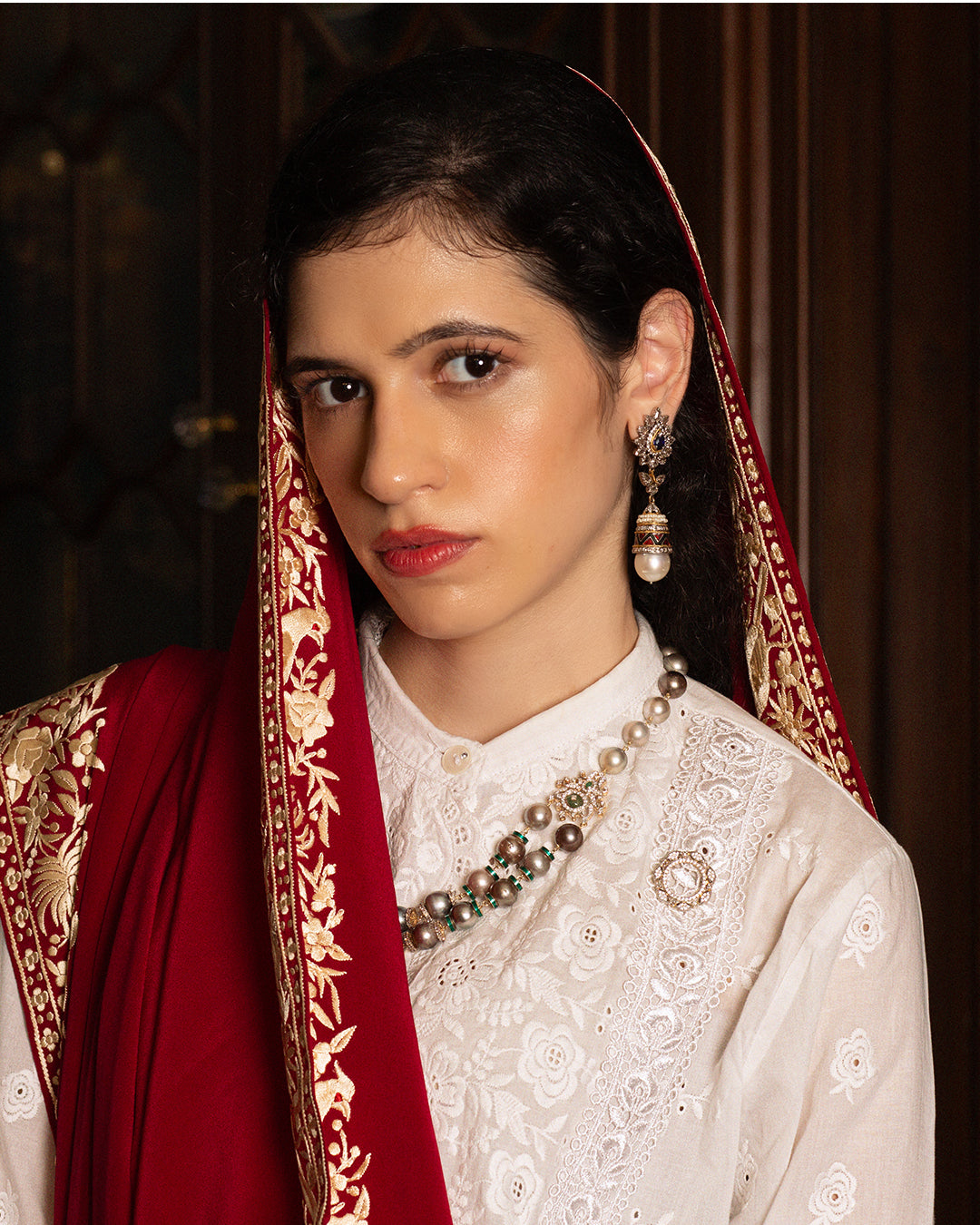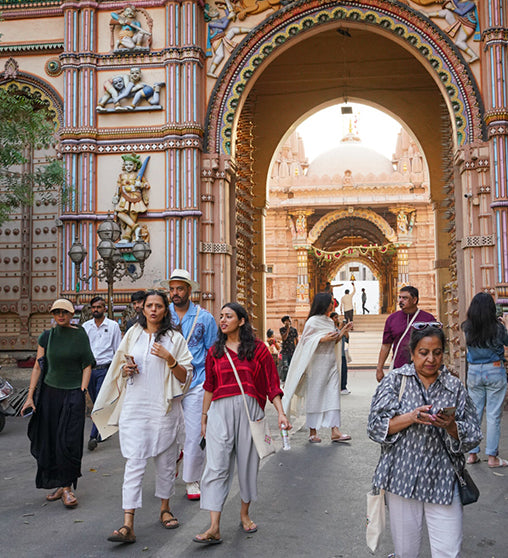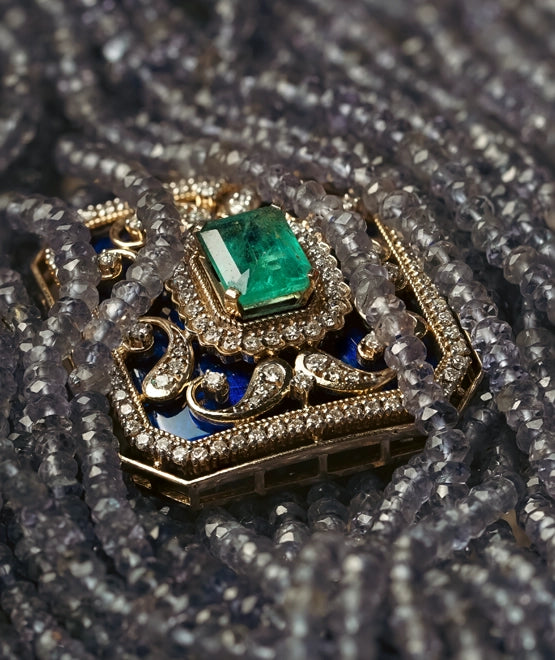Our Materials
AURUS is soulful luxury. It is meant for everyday and forever! We only work with high-quality, enduring materials, from precious metals to genuine gemstones.
The metal of royalty, gold has long been coveted for its reddish gold sheen and resistance to oxidation or corrosion. Although rare, gold is a highly malleable metallic element and is found throughout the world. Pure gold is very soft, so it's alloyed with other metals like copper, silver, and zinc to create the 14 karat gold that we use. This means that 14 out of 24 parts are gold, giving you the ideal balance of luxurious color, bright shine, and long-lasting strength.
14 Karat Gold : 14K gold with 58.4%(14 out of 24 parts) gives a subtle hue to the pieces and tightly holds and secures the diamonds and gemstones. It is appropriate for everyday-wear; scratches less and doesn’t bend or wear out easily.
18 Karat Gold : purity though seldom used in our designs is also appropriate for everyday-wear but we prefer to use 14K gold for its strength in holding the gemstones in place.
22 Karat Gold : 22K gold has 91.67% (22 out of 24 parts) purity and is mostly used in our designs that use the kundan setting (see glossary).
24 Karat Gold : 24k gold has 99.9% purity, is technically a gold foil as it is the purest and hence the most malleable. It is only used in our designs that use thekundan setting (see glossary)
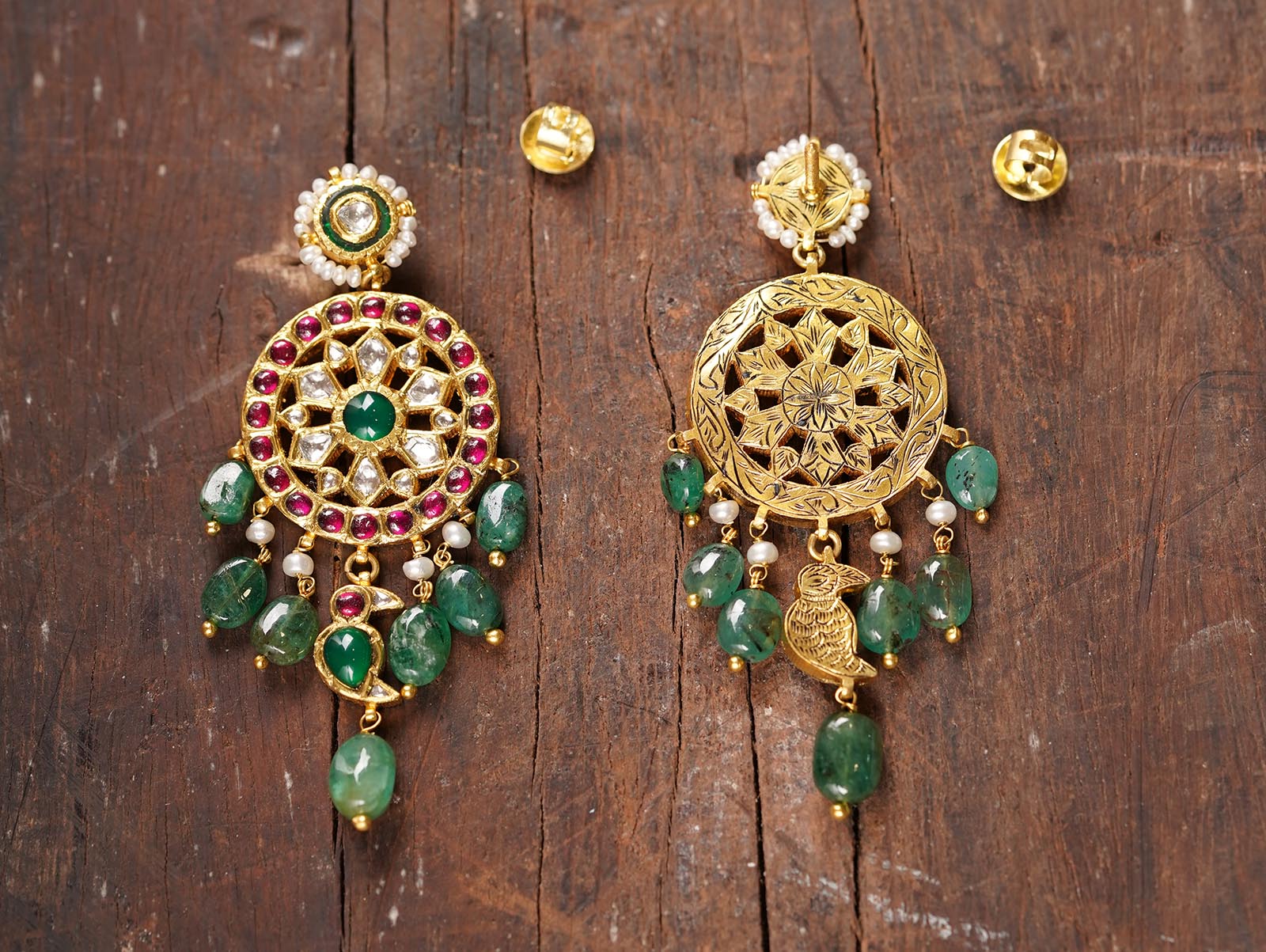
The Four C's of Diamonds, Cut, Color, Clarity, and Carat, are the basics that are used to select and grade all diamonds.
The different cuts and colors of Diamonds we use are :
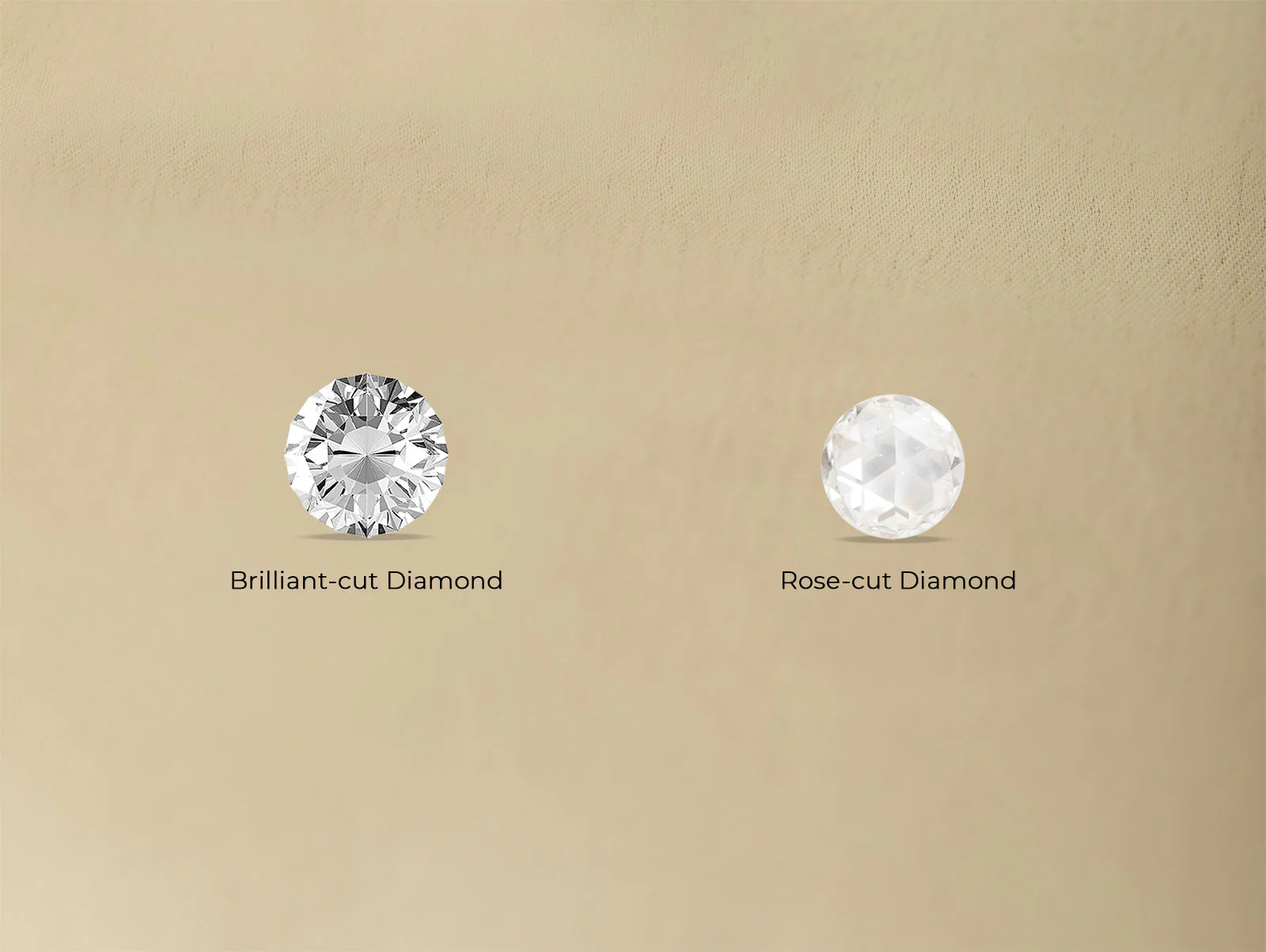
Brilliant-cut Diamond : Can you think of a better name for the sparkling look of the brilliant cut? With a precise arrangement of 57 facets, the brilliant cut is the benchmark for white diamonds. These stones represent the pinnacle of the gem cutter's art and bring unmatched brightness to any setting. Diamond is also a part of the Navratna Gemstones.(For Navratna see glossary)
Rose-cut Diamond : A throwback to the centuries-old cut, the simple and stunning rose cut was the jeweler's cut of choice for hundreds of years. Unlike round brilliant cuts, the rose cut is flat on its bottom with a domed surface, giving any setting an architectural beauty and creating a more subtle and understated sparkle. It is usually round but sometimes oval too.
Baguette-cut : Often used as accent stones, baguette-cut gemstones are long and rectangular with octagonal corners. A baguette-cut diamond will generally have less brilliance than a traditional brilliant cut. It became popular during the Art Deco era, which favoured straight, geometric patterns and forms. It is one of the more expensive diamond shapes as more of the stone is lost to create the shape than with other cuts.
Marquise-cut Diamond : A modified brilliant cut, the Marquise cut looks a little like a football. Symmetry is critical to the marquise cut, and even a slight misalignment of the two end points or right and left sides can cause it to appear off-balance in jewellery design.
Princess-cut Diamond : Betzalel Ambar and Israel Itzkowitz created the popular princess cut in 1980. A square cut, these diamonds are flexible and work well in nearly any ring style.
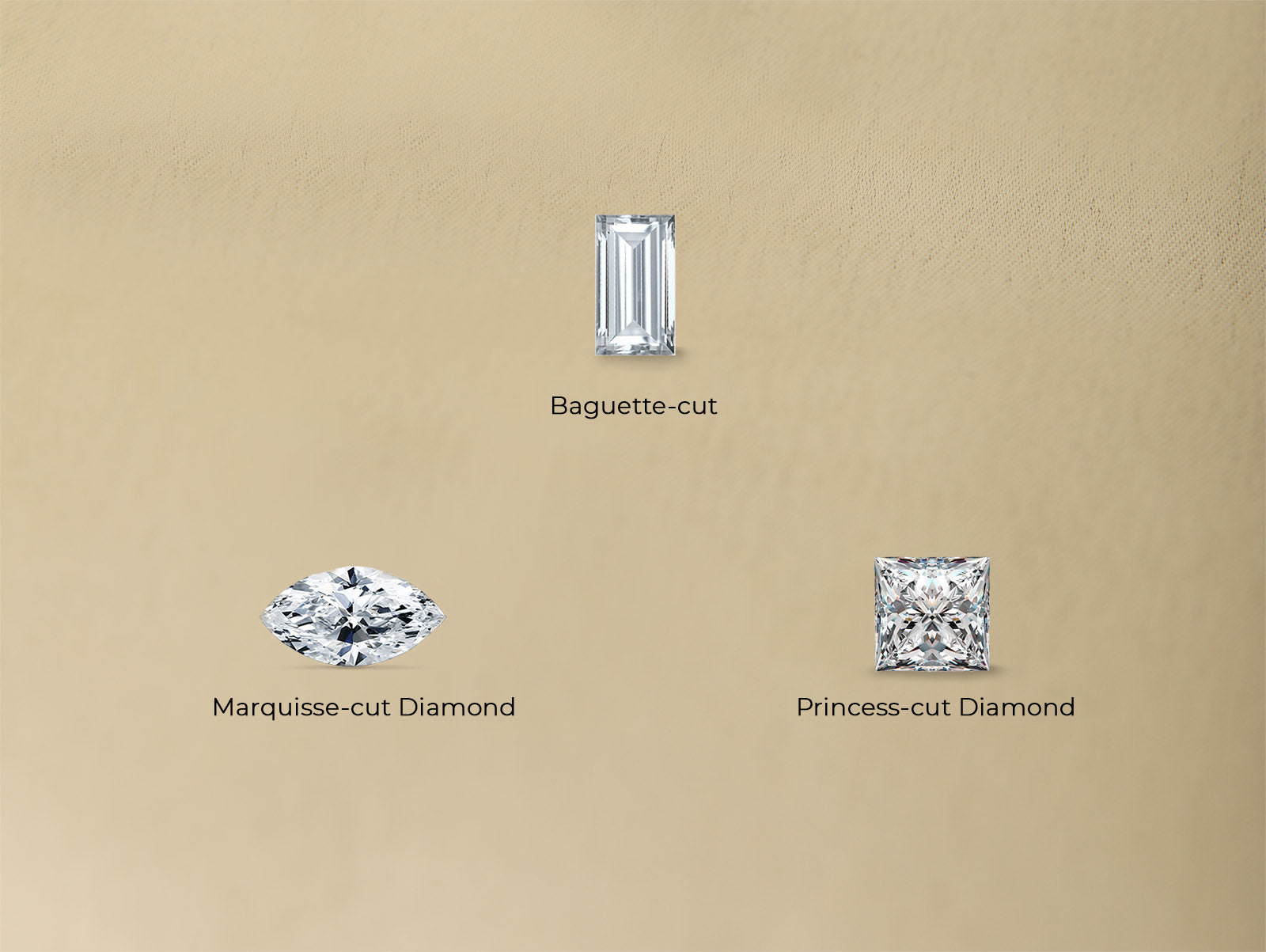
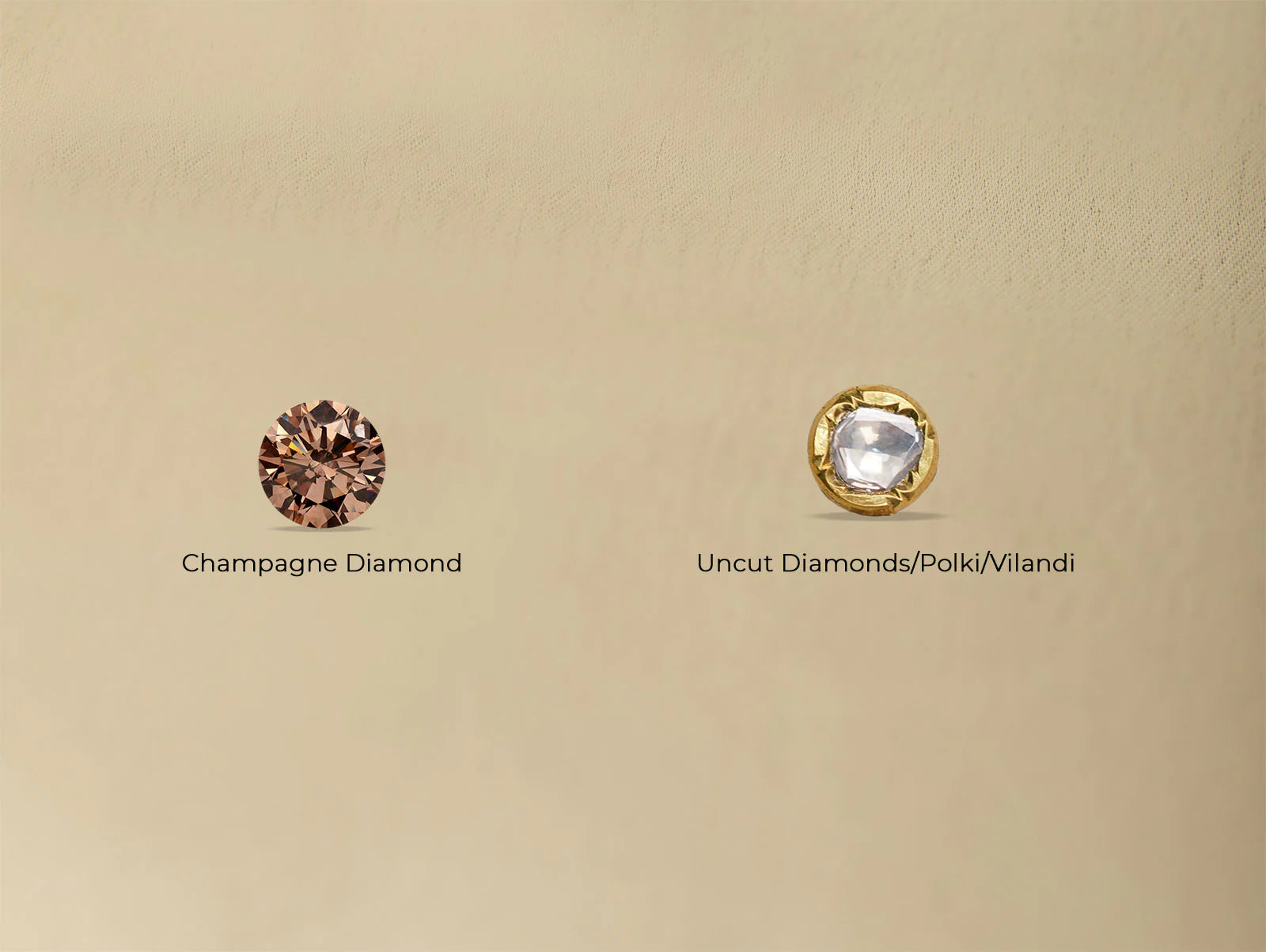
Champagne Diamond : Though white is the most famous, diamonds actually occur in lots of colors and champagne is one of our favorites. Naturally brown with a yellow tint, these diamonds add extra romance to our designs. Best of all, you get all the virtues of a natural diamond like superior hardness and incredible fire.
Uncut Diamonds/Polki/Vilandi : A diamond that has few facets and appears to have little fire or brilliance. It refers to unpolished or rough diamonds. Polkis can be irregular in shape and are frequently used in the Indian setting technique of kundan.(which is essentially gold foil)-for kundan (see glossary)
Agate : A semiprecious gemstone, agate is a variety of quartz and usually features bands of colour that vary from tan to red or brown to green. Agate is an umbrella name for a number of varieties of banded chalcedony. Agate crystals occur in many colors that range from translucent to opaque.
Amethyst :A purple form of quartz, amethyst is the birthstone for February usually translucent.
Aventurine : Aventurine is a form of quartz, characterised by its translucency and the presence of platy mineral inclusions that give a shimmering or glistening effect termed aventurescence. The most commonly seen colours are green, but it may also be orange, brown, yellow, blue, or grey.
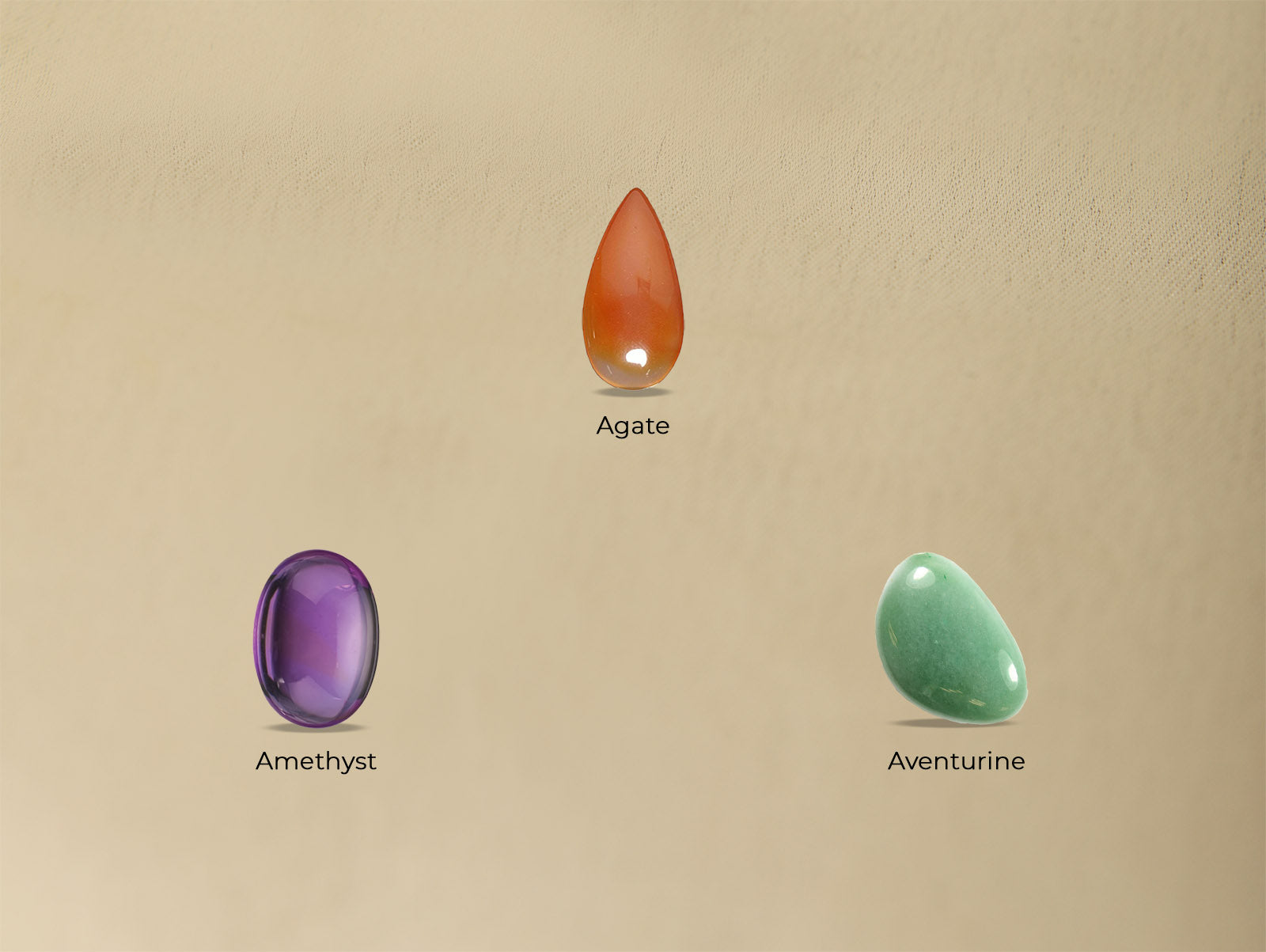
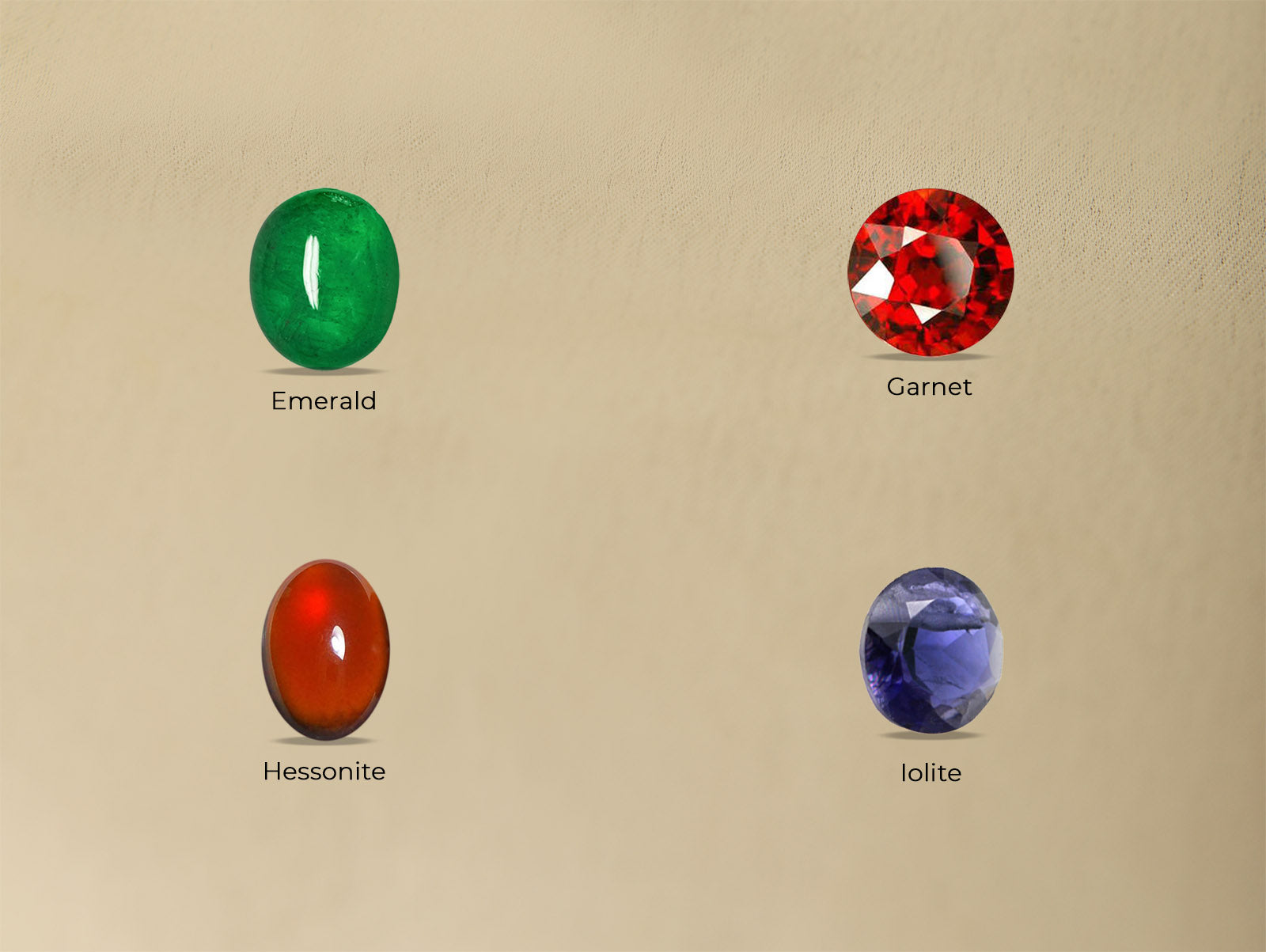
Emeralds : Part of the beryl family, these stunning green gemstones were created during an intensive tectonic process that brought together traces of chromium and vanadium with the normally colourless beryl. The earliest emeralds came from Zimbabwe and are among the oldest known gemstones in the world. Today, top-quality emeralds are mined in Colombia.
Russian emerald is one of the finest quality emeralds resourced from the Russian region. These beautiful green gems are recognised by their unique light to medium green color, crystal-like clarity and considerable size.
Emerald is also a part of the Navratna Gemstones. (For Navratna see glossary)
Garnet :Garnet is a group of silicate minerals. It is popularly known as a dark red gemstone, but it is actually a group of gemstones that can be a variety of colors.
Hessonite :Hessonite is a brownish-yellow variety of garnet. Hessonite is also a part of the Navratna Gemstones. (For Navratna see glossary)
Iolite : Iolite is primarily available in various shades of blue to violet-blue and it has a greasy luster. Iolite is pleochroic, meaning it can appear different colors from different directions--in this case, some combination of blue, violet blue, colorless, and brownish.
Jade : Called the stone of heaven, jade is a hard stone that has been treasured by the Chinese for over 7,000 years. Jade is actually a term that encompasses two different mineral species with similar appearance: nephrite and jadeite. The original jade treasured by the Chinese culture, nephrite is a calcium magnesium silicate and comes in shades of white and green. The composition of nephrite is fibrous, making it one of the "toughest" materials on earth.
Labradorite : Labradorite is a gemstone in the feldspar family. It is known for a brilliant play of color and exhibits lustrous metallic tints of blue, green, yellow, red, gold, and purple.
Onyx : Onyx is a variety of the microcrystalline quartz, called chalcedony. Traditionally found in black, onyx is also available in a variety of colours. We have also use green onyx.
Peridot : A yellowish green gemstone, composed of silica, magnesia, and iron. Common in certain volcanic rocks. It ranges in color from olive to lime green.
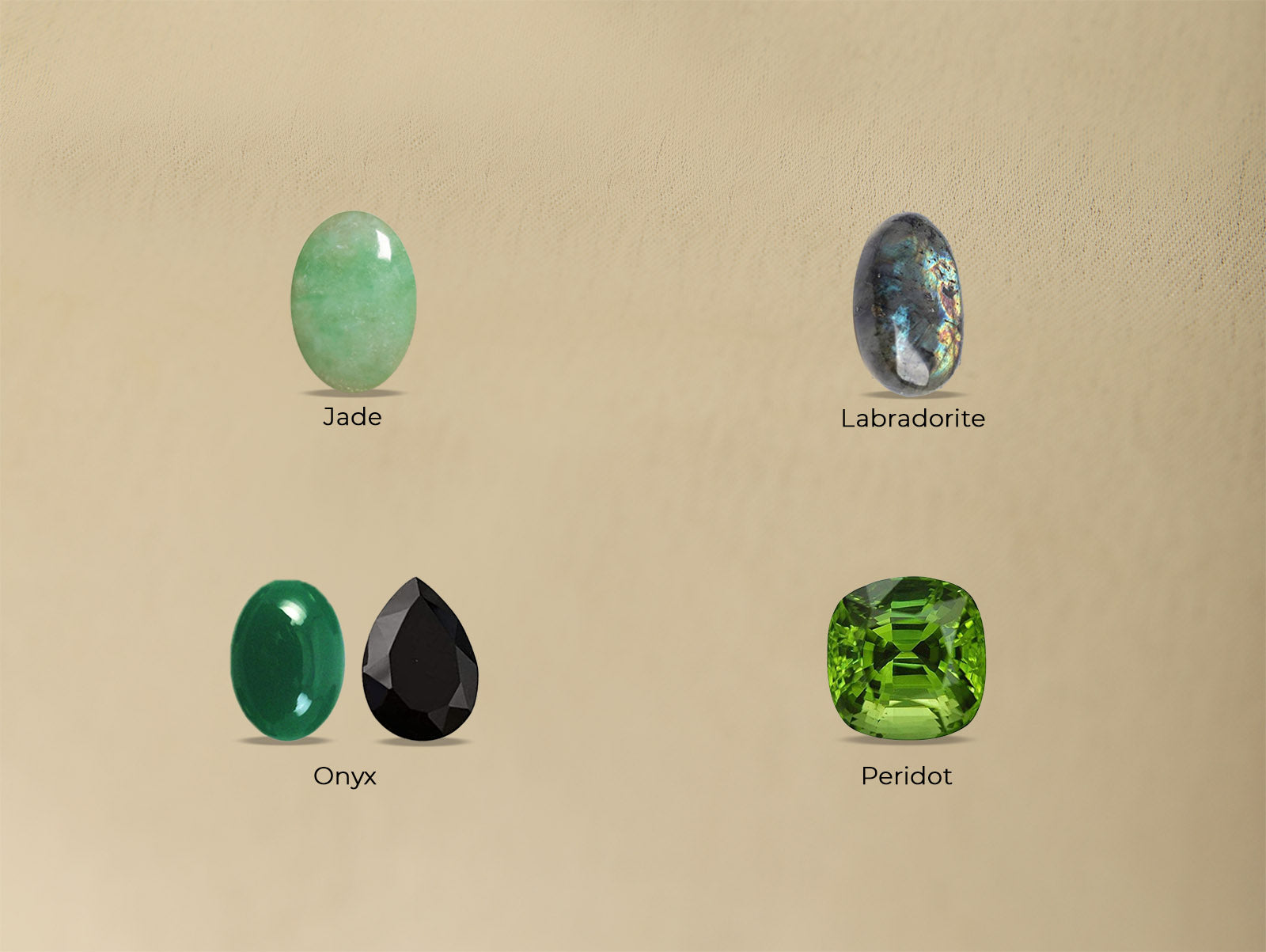
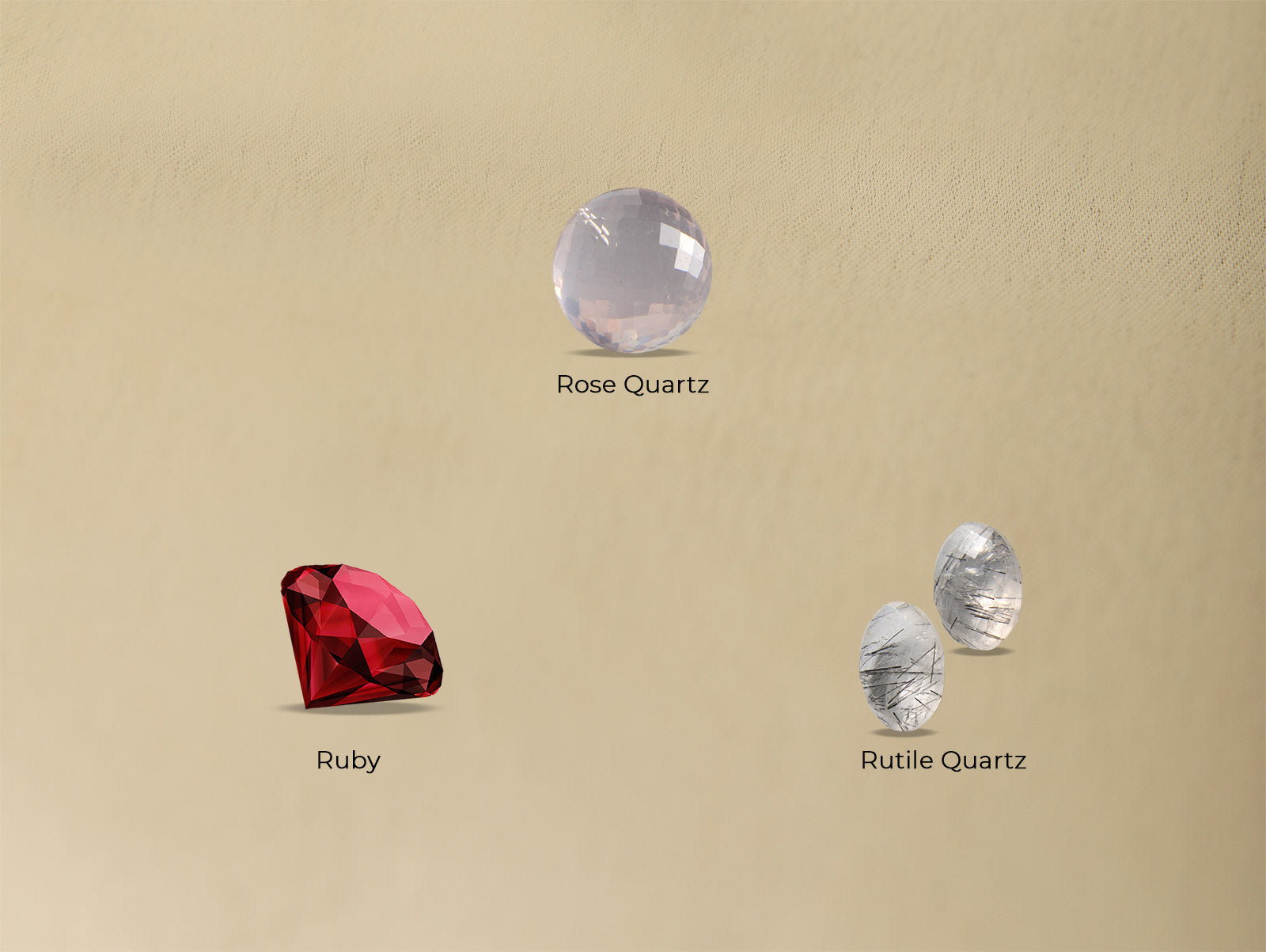
Rose Quartz : A pink variety of quartz, that ranges from very pale pink to deep reddish pink, and from opaque to transparent.
Ruby : Naturally occurring rubies are one of the world’s most valuable gemstones. They come from the mineral corundum, which is also the host for sapphires. However, only red corundum can be considered a ruby and the ruby is prized for its hardness, durability, luster, and rarity. Ruby is also a part of the Navratna Gemstones. (For Navratna see glossary)
Ruby (Glass-Filled) : Ruby is corundum, presence of chromium - if the red colour is less Ruby is corundum and the chromium in it gives it the color red. Rubies are filled with glass in high pressure to attain a specific colour or to have an even tone colour. They dont need any specific care. They will be prone to break or scratch like other gemstones. If you test these the results would show ruby treated with glass.
Rutile Quartz : Rutilated Quartz is clear quartz or smoky quartz with hair-like inclusions of the mineral rutile. The hairs are usually golden colored, but can also be silver, copper, or black.
Serpentine : Serpentine is a group of minerals. Ranges in color from pale yellowish green through various shades of green to almost black, often with a mottled or scaly appearance. It is soft in terms of gemstones
Simulated Ivory : A man-made gemstone created with a compound of minerals to make which looks and feels like Ivory.
Spinel :Spinel belongs to the corundum family. They are mainly found in shades of pink, red and also blue, yellow, green, black, and brown. Spinel is a gem that has been confused with ruby and sapphire for over 1000 years. Several of the most spectacular spinels ever discovered were mounted as "crown jewels" and other "jewelry of significance" under the assumption that they were rubies or sapphires.
Tanzanite : Tanzanite is the violet blue to blue violet variety of the mineral zoisite. It is mined commercially only in one area of the world: the Merelani Hills of Tanzania, which is where it gets its name.
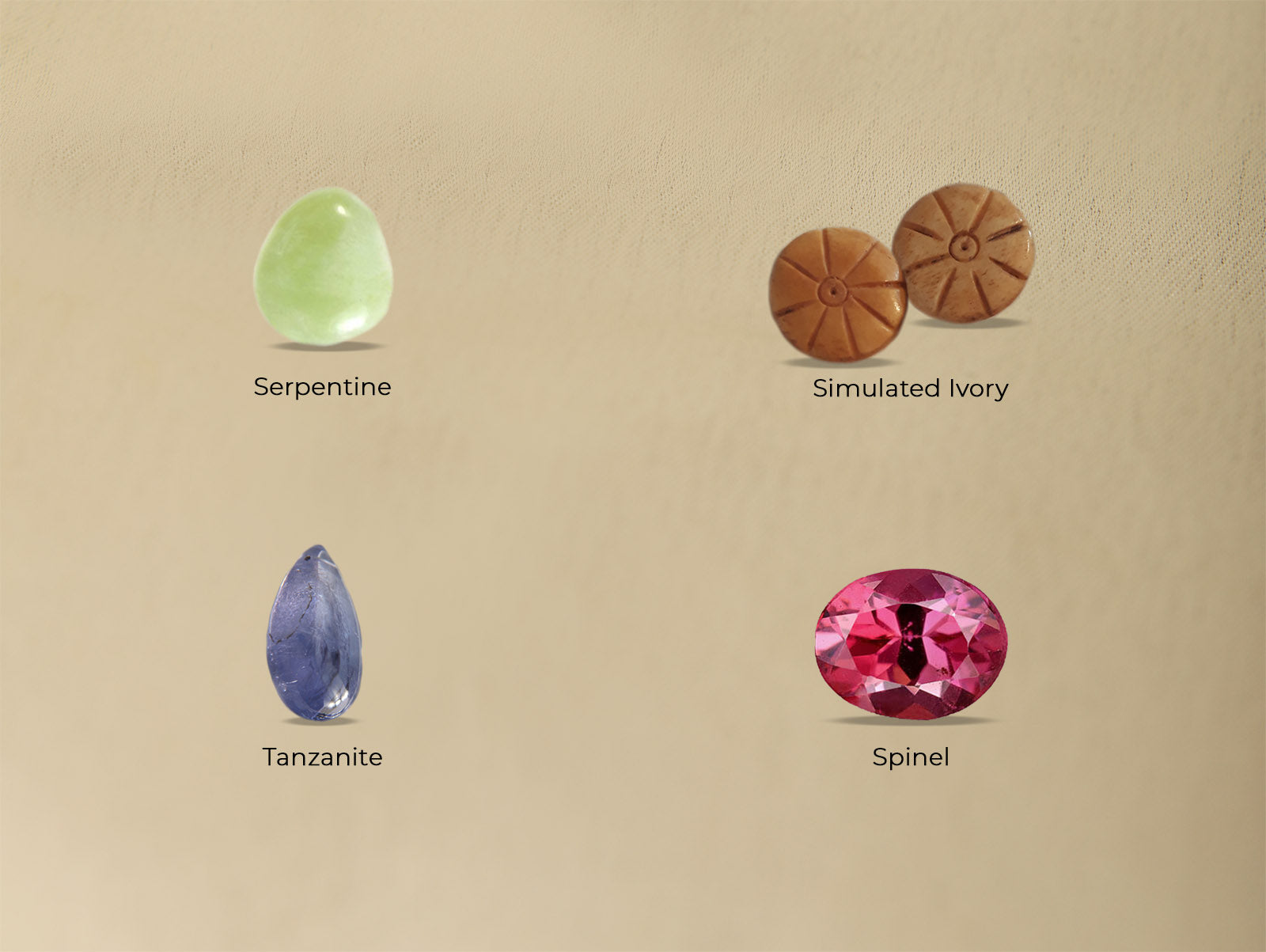
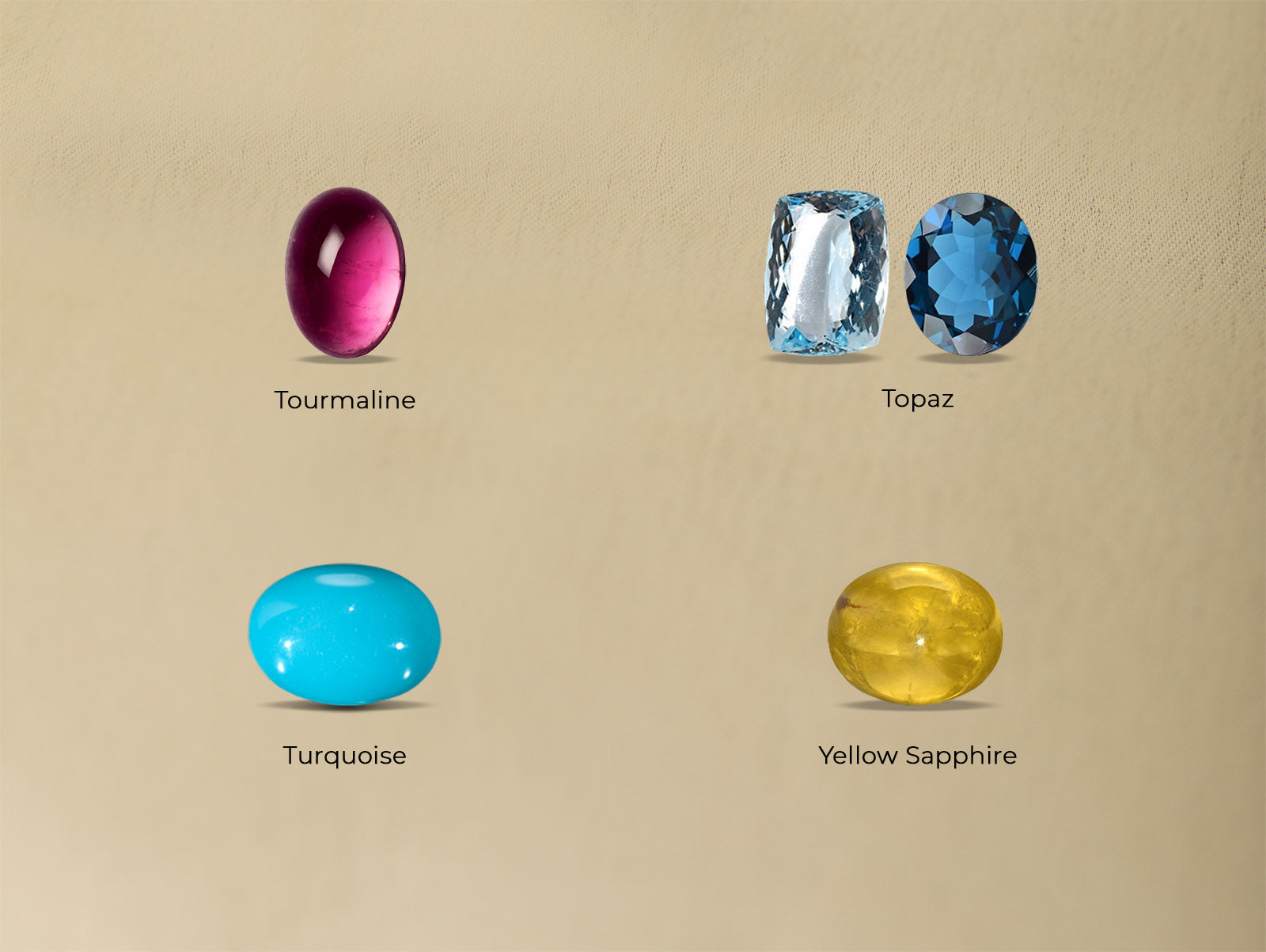
Topaz : Topaz is a silicate mineral. It can be found in many colors, including red, orange, peach, pink, gold, yellow, blue, brown, green, white, and clear. We mostly use blue topaz and yellow topaz. Topaz is also a part of the Navratna Gemstones. (For Navratna see glossary)
Tourmaline : Tourmaline is a silicate mineral. It is found all over the world and comes in a variety of colors including shades of red, pink, yellow, black, green, and blue.
Turquoise : An opaque greenish-blue mineral. It often has veins of darker or lighter material running through.
Yellow Sapphire : Yellow sapphire is the yellow variety of sapphire, a very hard stone consisting of the mineral corundum. Ruby is also a variety of corundum.
South - Sea Pearls : South Sea Pearls are very rare and unique. Given the rarity of the oyster, cultivation and production costs remain extremely high. Also the reason why South Sea Pearls are among the most expensive pearls. South-sea pearls have naturally occuring imperfections and indentations. Pearls may have surface damage, imperfections, cracks or chips in their nacre. Pearl is also a part of the Navratna Gemstones. (For Navratna see glossary)
Tahitian Pearls : More rare than white pearls, black pearls come from the giant black-lipped oyster called the Pinctada Margaritifera. These iridescent pearls range in colour from deep midnight black to shimmering emerald green and pale silver blue. Although black pearls are found in various oceans around the world, Tahitian black pearls are particularly renowned for their sheen and beauty. These pearls derive their name from the fact that they are primarily cultivated around the islands of French Polynesia, around Tahiti.
Mother of Pearl : Also known as nacre, mother-of-pearl is the iridescent layer that forms inside the lining of many molluscs, including pearl oysters and abalone. It comes in many natural colours but is often bleached or dyed. We have also used a colored mother of pearl.
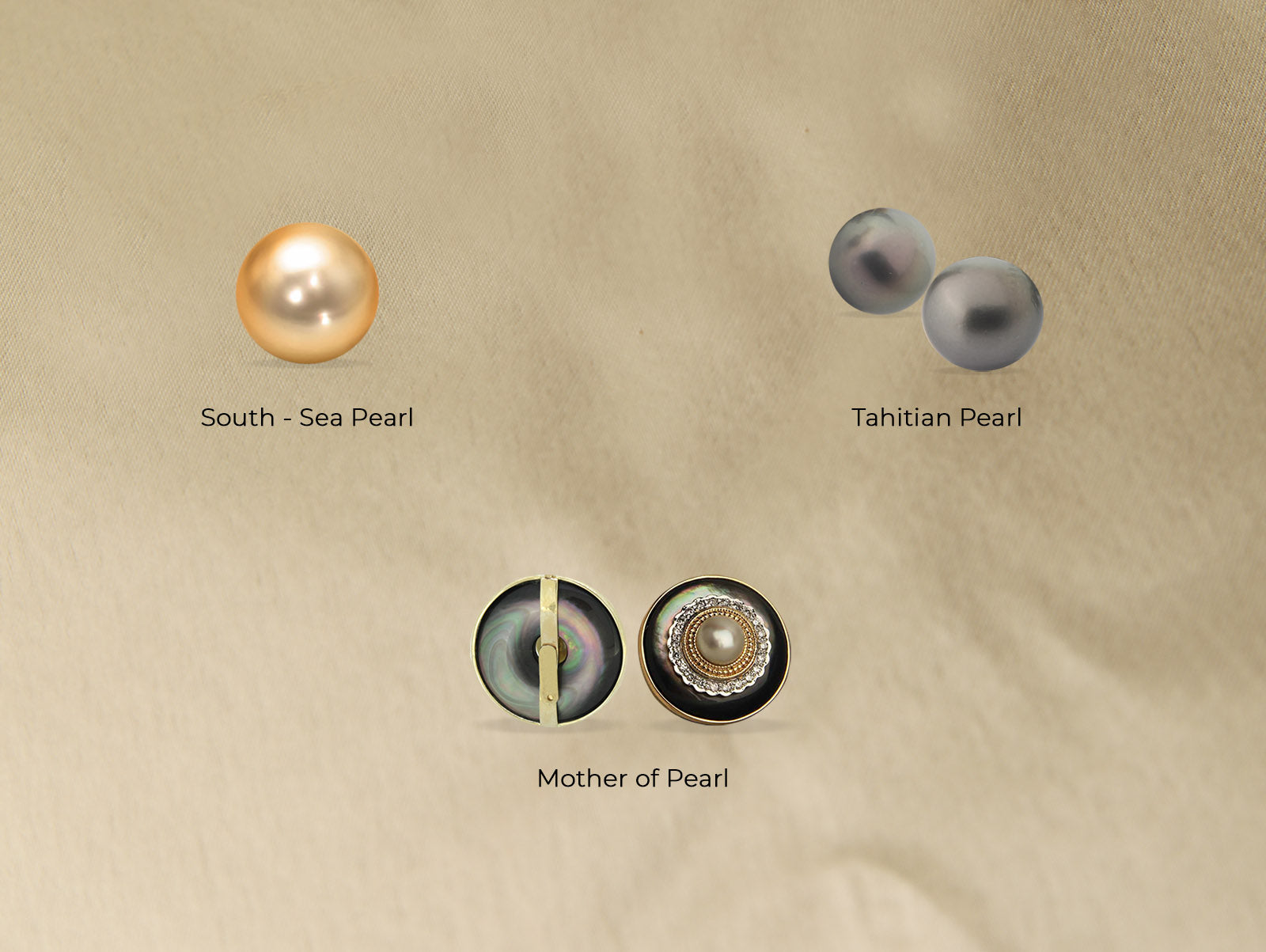
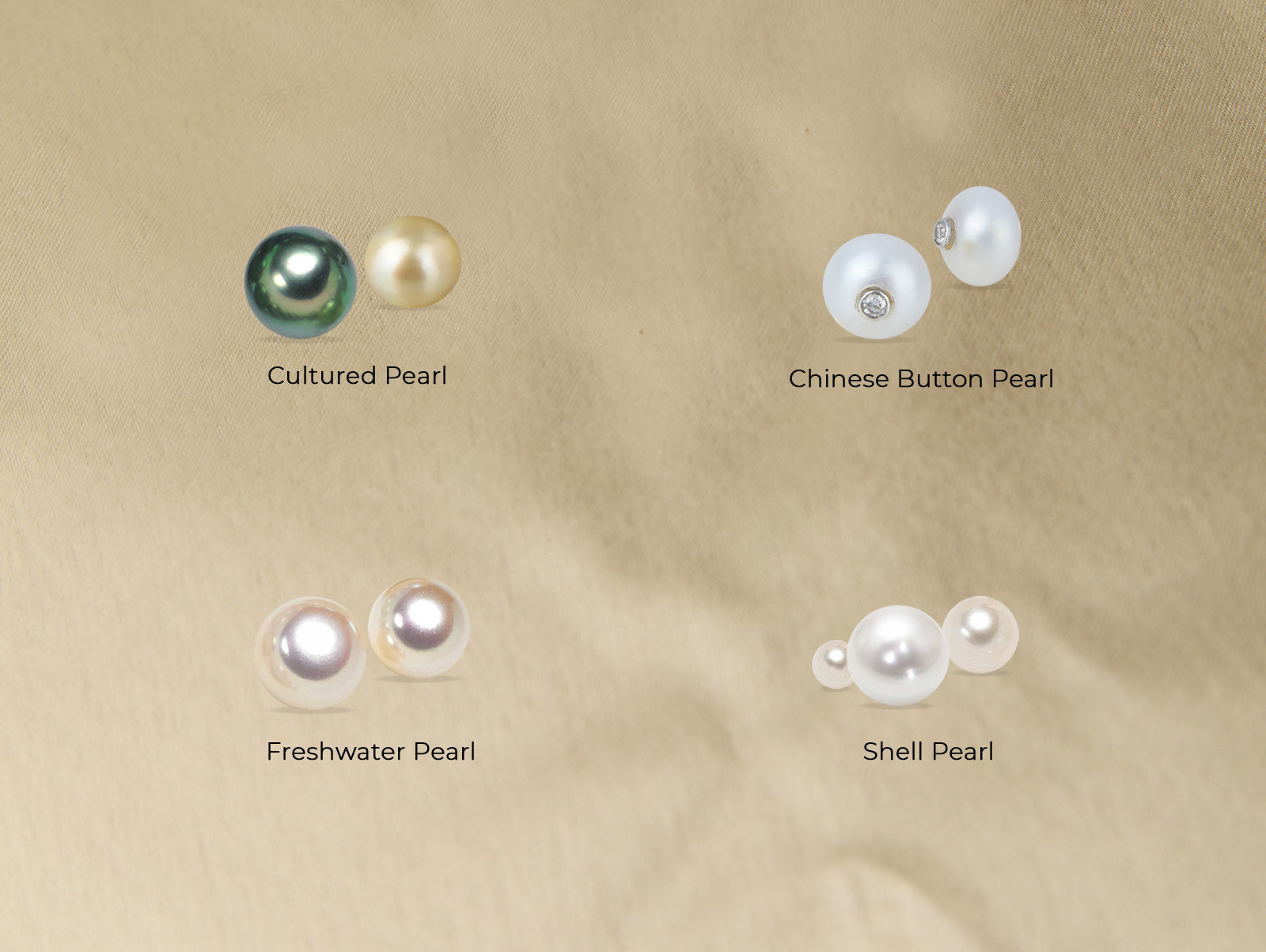
Cultured Pearls : These pearls are created by a mussel farmer or oyster farmer under controlled conditions.
Chinese Button Pearls : Chinese button pearls are symmetrical button-like pearls that appear to be flattened or squashed to some degree.
Freshwater Pearls : Freshwater pearls come from freshwater mussels. Freshwater pearls come in an amazing variety of shapes and colours.
Shell Pearls : Shell Pearls are synthetic pearls.
